Showing Spotlights 2025 - 2032 of 2779 in category All (newest first):
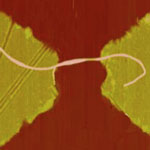 Infrared (IR) detectors are used in imaging applications that include for instance medical diagnosis, environmental monitoring, space science, and security and military sensor devices. High-quality detectors require cryogenic cooling in order for the image not to be distorted by the detectors own radiation. This makes them expensive both to produce and to run. Although uncooled IR detectors are made, their resolution and image quality tend to be much lower than cooled detectors. It appears that carbon nanotubes (CNTs) could be used as novel IR detector material that would allow the fabrication of highly efficient detectors that do not require cooling. Researchers at Michigan State University have now, for the first time, experimentally demonstrated the design, manufacturing and experimental testing of an integrated nanoantenna concept for CNT based IR sensors.
Infrared (IR) detectors are used in imaging applications that include for instance medical diagnosis, environmental monitoring, space science, and security and military sensor devices. High-quality detectors require cryogenic cooling in order for the image not to be distorted by the detectors own radiation. This makes them expensive both to produce and to run. Although uncooled IR detectors are made, their resolution and image quality tend to be much lower than cooled detectors. It appears that carbon nanotubes (CNTs) could be used as novel IR detector material that would allow the fabrication of highly efficient detectors that do not require cooling. Researchers at Michigan State University have now, for the first time, experimentally demonstrated the design, manufacturing and experimental testing of an integrated nanoantenna concept for CNT based IR sensors.
Apr 22nd, 2009
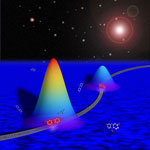 Carbon nanotubes have been recognized as promising materials for catalysis, either as catalysts themselves, as catalyst additives or as catalyst supports. Researchers are particularly excited by the promise of single-walled carbon nanotubes as electrocatalysts or electron harvesting materials for electron-to-fuel conversion. Nanotubes act as catalysts when an electric current is passed through them. This enables them to donate electrons to molecules that come in contact with the reaction sites. In trying to explain carbon nanotubes' role as catalyst, scientist have long proposed that the reactive sites for catalysis can be discrete, specific sites rather then the entire sidewall of the nanotubes. But observing them directly has been challenging. A team at Cornell University has now filled in an important blank by pinpointing unique sites where the reactions take place on SWCNTs. The scientists showed that the reactions do not occur all along the tubes, but at the ends of the tubes or at defects along the tubes.
Carbon nanotubes have been recognized as promising materials for catalysis, either as catalysts themselves, as catalyst additives or as catalyst supports. Researchers are particularly excited by the promise of single-walled carbon nanotubes as electrocatalysts or electron harvesting materials for electron-to-fuel conversion. Nanotubes act as catalysts when an electric current is passed through them. This enables them to donate electrons to molecules that come in contact with the reaction sites. In trying to explain carbon nanotubes' role as catalyst, scientist have long proposed that the reactive sites for catalysis can be discrete, specific sites rather then the entire sidewall of the nanotubes. But observing them directly has been challenging. A team at Cornell University has now filled in an important blank by pinpointing unique sites where the reactions take place on SWCNTs. The scientists showed that the reactions do not occur all along the tubes, but at the ends of the tubes or at defects along the tubes.
Apr 21st, 2009
 The field of printable electronics is already well established. The biggest limitation to further increasing the functionality of printed electronics devices is energy management, i.e. the space requirement and cost of batteries. Ideally, power and energy storage devices will be integrated into the manufacturing process to be printed at the same time. What is still needed to complement a further deveopment of printed electronics device technology are truly printable charge storage devices that can be easily fabricated using large-scale, solution-based, roll-to-roll processing, while still displaying good electrochemical performance. Only fully printable charge storage devices would allow for full integration into the manufacturing process of printed electronics.
The field of printable electronics is already well established. The biggest limitation to further increasing the functionality of printed electronics devices is energy management, i.e. the space requirement and cost of batteries. Ideally, power and energy storage devices will be integrated into the manufacturing process to be printed at the same time. What is still needed to complement a further deveopment of printed electronics device technology are truly printable charge storage devices that can be easily fabricated using large-scale, solution-based, roll-to-roll processing, while still displaying good electrochemical performance. Only fully printable charge storage devices would allow for full integration into the manufacturing process of printed electronics.
Apr 20th, 2009
 A recent study has shown that nineteenth century thermodynamics can still provide useful insights into twenty-first century nanosciences; and all this can be done with pencil and paper rather than an expensive super-computer! When the size of materials approaches the nanoscale, matter begins to behave highly exotically. By shrinking the size of materials, the surface-to-volume ratio increases. Considering this, scientists can study size effects on material properties from macroscopic laws, the so-called top-down approach. In thermodynamics, the Gibb's energy concept is particularly suited to describe the liquid-solid phase transition (what we mortals call the melting temperature).
A recent study has shown that nineteenth century thermodynamics can still provide useful insights into twenty-first century nanosciences; and all this can be done with pencil and paper rather than an expensive super-computer! When the size of materials approaches the nanoscale, matter begins to behave highly exotically. By shrinking the size of materials, the surface-to-volume ratio increases. Considering this, scientists can study size effects on material properties from macroscopic laws, the so-called top-down approach. In thermodynamics, the Gibb's energy concept is particularly suited to describe the liquid-solid phase transition (what we mortals call the melting temperature).
Apr 17th, 2009
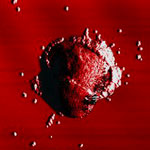 There is a slowly growing body of work that investigates the toxicity of synthesized nanoparticles to plants, aquatic invertebrates, algae, bacteria and different cell lines and we have been covering this topic in previous Spotlights as well as our nanoRISK newsletter. Although the potential negative effects of nanoparticles on organisms and the environment have raised concerns, limited studies so far have examined the difference between nanoparticles and bulk particles with the same chemical composition and mineral phase, or addressed the toxicity of dissolved metal ions from the nanoparticles. In new work by scientists at the University of Massachusetts, the toxicity of bulk oxide particles and the released ions were assessed along with four oxide nanoparticles, which clearly showed that size matters.
There is a slowly growing body of work that investigates the toxicity of synthesized nanoparticles to plants, aquatic invertebrates, algae, bacteria and different cell lines and we have been covering this topic in previous Spotlights as well as our nanoRISK newsletter. Although the potential negative effects of nanoparticles on organisms and the environment have raised concerns, limited studies so far have examined the difference between nanoparticles and bulk particles with the same chemical composition and mineral phase, or addressed the toxicity of dissolved metal ions from the nanoparticles. In new work by scientists at the University of Massachusetts, the toxicity of bulk oxide particles and the released ions were assessed along with four oxide nanoparticles, which clearly showed that size matters.
Apr 16th, 2009
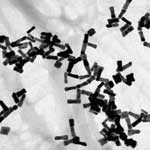 Cancer researchers are therefore experimenting with nanoparticles as both contrast agent and drug carrier capable of pinpointing and destroying individual cancer cells. Targeted nanoparticles consist of a metallic or organic core conjugated with a biomolecule of interest. To be able to navigate nanoparticles to a desired target (i.e. a specific cancer cell), they need the property of specific target recognition. Depending on the type of cancer that is to be targeted, researchers choose biomolecules that show high affinity toward these specific tumor cells. Think of these biomolecules as a navigation aid to transport nanoparticles to the cancerous site or organ of interest. As part of their overall goal of developing target-specific gold nanoparticles for treatment of cancers, scientists at the University of Missouri have carried out a systematic investigation on the design and development of targeted gold nanorods.
Cancer researchers are therefore experimenting with nanoparticles as both contrast agent and drug carrier capable of pinpointing and destroying individual cancer cells. Targeted nanoparticles consist of a metallic or organic core conjugated with a biomolecule of interest. To be able to navigate nanoparticles to a desired target (i.e. a specific cancer cell), they need the property of specific target recognition. Depending on the type of cancer that is to be targeted, researchers choose biomolecules that show high affinity toward these specific tumor cells. Think of these biomolecules as a navigation aid to transport nanoparticles to the cancerous site or organ of interest. As part of their overall goal of developing target-specific gold nanoparticles for treatment of cancers, scientists at the University of Missouri have carried out a systematic investigation on the design and development of targeted gold nanorods.
Apr 15th, 2009
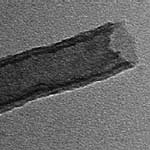 Researchers in Korea have developed a novel platform for intracellular delivery of genetic material and nanoparticles, based on vertically aligned carbon nanosyringe arrays of controllable height. Stem cell research is being pursued in laboratories all over the world in the hope of achieving major medical breakthroughs. Scientists are striving to create therapies that rebuild or replace damaged cells with tissues grown from stem cells and offer hope to people suffering from cancer, diabetes, cardiovascular disease, spinal-cord injuries, and many other disorders. Nanotechnology is increasingly playing a role in how researchers think about delivering stem cell therapies into cells. Cell plasma membranes are a formidable barrier to the delivery of exogenous macromolecules in cellular engineering and labeling and cell therapy. Attempts have been made to breach this barrier, particularly using mechanical means such as microinjectors that deliver genetic material into the cell. However, there is concern about damage to the cell membrane caused by intrinsic invasiveness of the micro- or submicrosized needle used in these procedures.
Researchers in Korea have developed a novel platform for intracellular delivery of genetic material and nanoparticles, based on vertically aligned carbon nanosyringe arrays of controllable height. Stem cell research is being pursued in laboratories all over the world in the hope of achieving major medical breakthroughs. Scientists are striving to create therapies that rebuild or replace damaged cells with tissues grown from stem cells and offer hope to people suffering from cancer, diabetes, cardiovascular disease, spinal-cord injuries, and many other disorders. Nanotechnology is increasingly playing a role in how researchers think about delivering stem cell therapies into cells. Cell plasma membranes are a formidable barrier to the delivery of exogenous macromolecules in cellular engineering and labeling and cell therapy. Attempts have been made to breach this barrier, particularly using mechanical means such as microinjectors that deliver genetic material into the cell. However, there is concern about damage to the cell membrane caused by intrinsic invasiveness of the micro- or submicrosized needle used in these procedures.
Apr 14th, 2009
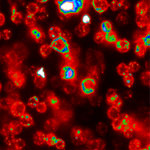 DNA nanomachines - synthetic DNA assemblies that switch between defined molecular shapes upon stimulation by external triggers - can be controlled by a variety of methods; these include pH changes and the addition of other molecular components, such as small molecule effectors, proteins and DNA strands. A team of Indian researchers has now taken structural DNA nanotechnology, where so far only in vitro applications have been demonstrated, across a new boundary and into living systems. They describe the successful operation of an artificially designed DNA nanomachine inside living cells, and show that these nanomachines work as efficiently inside cells as in vitro. The device is externally triggered by protons and functions as a pH sensor based on fluorescence resonance energy transfer (FRET) inside living cells.
DNA nanomachines - synthetic DNA assemblies that switch between defined molecular shapes upon stimulation by external triggers - can be controlled by a variety of methods; these include pH changes and the addition of other molecular components, such as small molecule effectors, proteins and DNA strands. A team of Indian researchers has now taken structural DNA nanotechnology, where so far only in vitro applications have been demonstrated, across a new boundary and into living systems. They describe the successful operation of an artificially designed DNA nanomachine inside living cells, and show that these nanomachines work as efficiently inside cells as in vitro. The device is externally triggered by protons and functions as a pH sensor based on fluorescence resonance energy transfer (FRET) inside living cells.
Apr 9th, 2009
 Infrared (IR) detectors are used in imaging applications that include for instance medical diagnosis, environmental monitoring, space science, and security and military sensor devices. High-quality detectors require cryogenic cooling in order for the image not to be distorted by the detectors own radiation. This makes them expensive both to produce and to run. Although uncooled IR detectors are made, their resolution and image quality tend to be much lower than cooled detectors. It appears that carbon nanotubes (CNTs) could be used as novel IR detector material that would allow the fabrication of highly efficient detectors that do not require cooling. Researchers at Michigan State University have now, for the first time, experimentally demonstrated the design, manufacturing and experimental testing of an integrated nanoantenna concept for CNT based IR sensors.
Infrared (IR) detectors are used in imaging applications that include for instance medical diagnosis, environmental monitoring, space science, and security and military sensor devices. High-quality detectors require cryogenic cooling in order for the image not to be distorted by the detectors own radiation. This makes them expensive both to produce and to run. Although uncooled IR detectors are made, their resolution and image quality tend to be much lower than cooled detectors. It appears that carbon nanotubes (CNTs) could be used as novel IR detector material that would allow the fabrication of highly efficient detectors that do not require cooling. Researchers at Michigan State University have now, for the first time, experimentally demonstrated the design, manufacturing and experimental testing of an integrated nanoantenna concept for CNT based IR sensors.
 Subscribe to our Nanotechnology Spotlight feed
Subscribe to our Nanotechnology Spotlight feed





